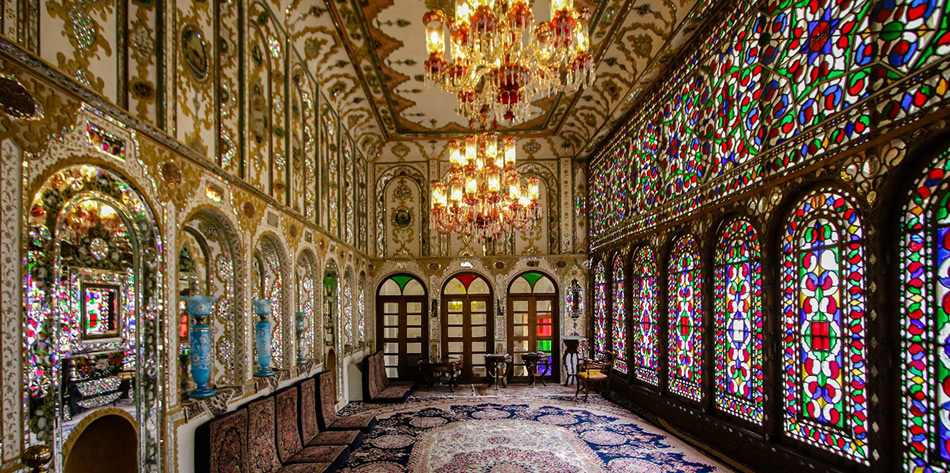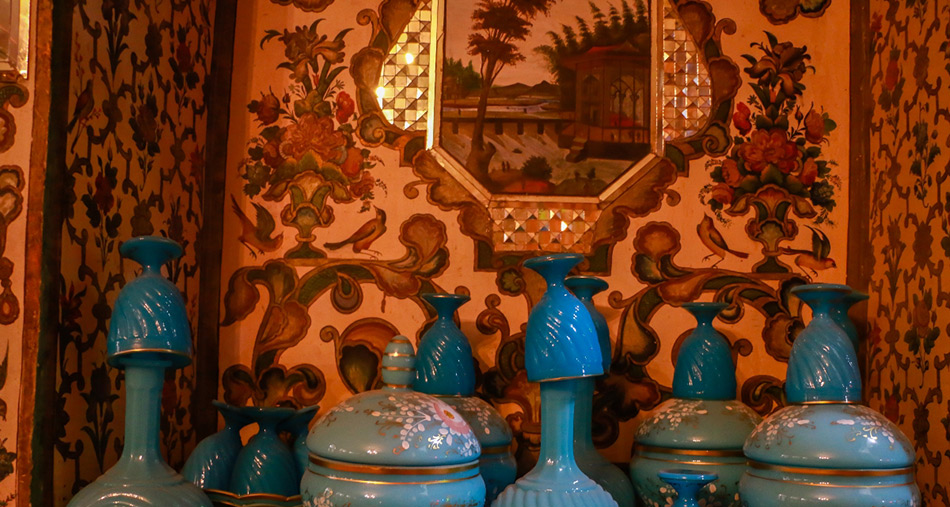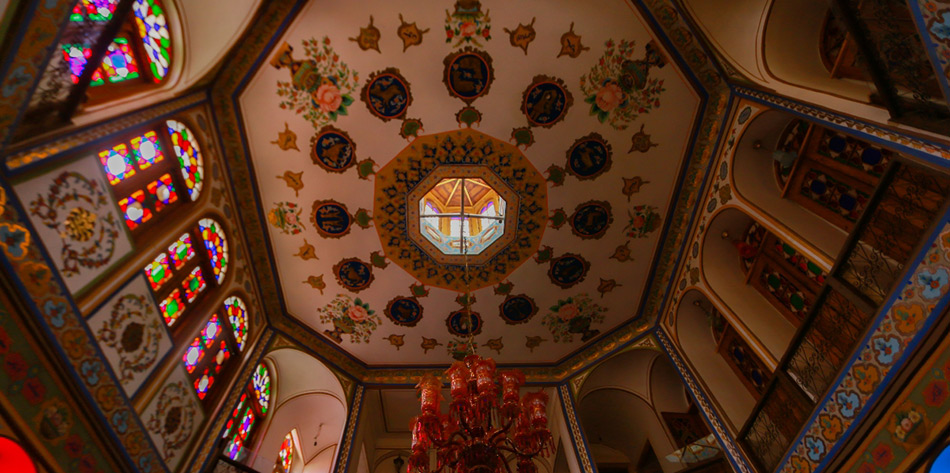Mollabashi historical house
Mollabashi or Motamedi house is one of the historic houses of Isfahan which dates back to the Zandieh era and was purchased during the rule of Zell-e Sultan in Isfahan by Mollabashi, the astronomer of Naser al-Din Shah. Mr. Motamedi bought this house in 2001 and repaired the damaged parts of the house. This house is renowned for its beauty in architecture and furniture layout.
When MullaBashi came to this mansion, it included two 5-door and a Zemestan-Neshin (Winter-Sitting) section that was from the Zandie era. And in front of the house of Malek Al-Tojjar, a few steps away from it, the house was ignored. But with the coming of MullaBashi, the Shah-Neshin (Kings) section and the 9 section were added. The most important part of this mansion is the Kings section.
This house, which was a religious and cultural institution during the Qajar era, has an outer courtyard, a working room, a separate outside entrance and a guest house for visitors.
The art of metal work on wood is used to decorate it. Motamedi house is located in Malek Street, Poshtbarou Alley.
This house is so beautifully designed that you would like to spend hours in Mollabashi house. The colors used in this house, its furnishings, and architecture make it one of the most impressive houses in Isfahan. When the light shines through the seven-colored windows of this house, they create a dreamlike and beautiful landscape. Decorations on the ceiling and walls, chandeliers and Aina-Kari (mirrors), make this house so unique. This amazing house has some parts for work that have more serious spaces than any other parts. This mansion is an attractive example of the architecture of Iranian houses.
This mansion is in fact a fascinating example of Iranian houses, meaning that they really lived in it and lived close to the lives of ordinary people of their time. Therefore, MullaBashi’s house can enlighten you to a new and new angle from Isfahan. The house is divided into two parts: the living spaces and service spaces. In living spaces, we faced with warm and intimate, high energy and high lighting, and in the service spaces there are rooms for rest and business, in which the space is more closed, more serious and it’s cold.
MullaBashi’s house can be divided into three parts: Exterior Courtyard, Tabestan-Neshin (Summer- Alcove) and Inner Courtyard.
- Exterior Courtyard: The reconstruction of this part is more visible than any other parts of the house. The end of the courtyard leads you to a beautiful room. This room overlooks the street. During the day, the room is showered in sunlight. The staircase would lead you to the porch and the rooftop.
- Summer House (Tabestan-Neshin): From the courtyard you can get to the summer room which has noticeable Zandieh Features. The painting on the walls of this room depict the names of planets and ancient Iranian months.
- Inner Courtyard: This part is where you can truly see most of the historic aspects of a traditional Iranian house.
The entrance doors of the rooms are adorned with Muqarnas tiles. A water pond in the center gives this house a traditional Persian atmosphere. A rectangular room with fresco walls was designed and used to host special guests. It was big enough to hold different celebrations in it.
Isfahan’s climate is temperate and dry, with little snow and rain. The best season to travel to Isfahan is autumn. But this season, Isfahan is getting so crowded. If you want to go to Isfahan this season, you should book a hotel in advance, especially if there are holidays in autumn.
Tags:Esfahan, Esfehan, historical, historical-place, Isfahan, Isfahan Province, journey, mollabashi, mollabashi historical house, mollabashi house, tour agency, travel, travel agency, trip, vacation, اصفهان, خاته ملاباشی







